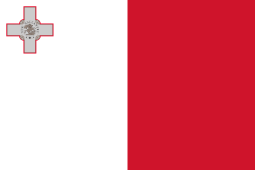Troisvierges
Troisvierges (Luxembourgish: Ëlwen, German: Ulflingen) is a commune and town in northern Luxembourg, in the canton of Clervaux. The two highest hills in Luxembourg, the Kneiff (560 m) and Buurgplaatz (559 m), are located in the commune.
Troisvierges Ëlwen | |
|---|---|
Binsfeld street | |
 Coat of arms | |
Map of Luxembourg with Troisvierges highlighted in orange, and the canton in dark red | |
| Coordinates: 50.1167°N 6°E | |
| Country | |
| Canton | Clervaux |
| Area | |
| • Total | 37.86 km2 (14.62 sq mi) |
| Area rank | 15th of 102 |
| Highest elevation | 560 m (1,840 ft) |
| • Rank | 1st of 102 |
| Lowest elevation | 407 m (1,335 ft) |
| • Rank | 102nd of 102 |
| Population (2018) | |
| • Total | 3,179 |
| • Rank | 49th of 102 |
| • Density | 84/km2 (220/sq mi) |
| • Density rank | 71st of 102 |
| Time zone | UTC+1 (CET) |
| • Summer (DST) | UTC+2 (CEST) |
| LAU 2 | LU0000504 |
| Website | troisvierges.lu |
As of 2005, the town of Troisvierges, which lies in the south of the commune, has a population of 1,365. Other towns within the commune include Basbellain, Drinklange, Hautbellain, Huldange, and Wilwerdange.
Until 28 December 1908, the commune was known as "Basbellain", after its former administrative centre. On that date, the administrative centre was moved from Basbellain to Troisvierges.[1]
The coat of arms granted to Troisvierges in 1982 shows three virgins, representing Faith, Hope and Charity; a mountain, for the Oesling region; a stylised papal cross from the oldest known document naming the place; and a railway and wheel, for the importance of the railway in the town's development.[2]
History
The first known reference to the place was made in 1353 under its German name Ulflingen. The French name Troisvierges was adopted in the 17th century when Walloon pilgrims started using it to refer to the three virgins Saint Fides, Saint Spes and Saint Caritas. The Franciscan church of Troisvierges was built in 1658. By 1900 most of the local population were railway and customs employees. There were some 1550 inhabitants in 1910.
Troisvierges is known for being the site of the start of hostilities on the Western Front in the First World War. On 1 August 1914, German soldiers of the 69th Infantry Regiment disembarked at the town's railway station, violating the terms of Germany's use of the railways and hence violating Luxembourg's neutrality. This began a four-year occupation of Luxembourg by German forces.[3]
More recently the old farming population has almost entirely disappeared, and now many of the population are from Portugal or Belgium.[4]
Twin towns — sister cities
Troisvierges is a member of the Charter of European Rural Communities, a town twinning association across the European Union, alongside with:[5]

.svg.png)

























Images
- Troisvierges townhall
- St Andrew's church
- Interior of St Andrew's church
- Altar of the Three Virgins, St Andrew's church
References
- "Mémorial A, 1908, No. 77" (PDF) (in French). Service central de législation. Retrieved 2006-10-29.
- Heraldry of the World
- Tuchman, Barbara, The Guns of August. (Macmillan, New York: 1962) 82
- Bievre Commune of Europe
- "Charter members". europeancharter.eu. Charter of European Rural Communities. Retrieved 2019-09-05.
External links

